Published in 1510 “QUEEN CALAFIA” is this Legend or Fact?
Published in 1510 “QUEEN CALAFIA” is this Legend or Fact?
THE BLACK AMAZON QUEEN AFTER WHOM CALIFORNIA IS NAMED.
People in general who knows about this legend see it as hidden history, while others see it as myth. Currently to this day their are debates on the vility of her existence. One source maintains that the Spaniards upon arriving along the California shores saw a number of Black people with ships. They asked the Indians who were they and the Indians replied that these “black, curly haired people,” were of the land (California) and traded with people across the sea (the Pacific Ocean) by sailing back and forth.
I don’t know about you but I’m more inclined to believe the Native American Indians. Sailing from the Pacific Ocean & trading, seems more likely regarding this legend. – Sola
Where were these Black Californians going to in the Pacific? It is most likely they were trading with people in Hawaii or as far as the South Pacific where the Black population has always been very large and very widespread. In fact when Magellan arrived in the Filipines, there were large numbers of Negritos who were well organized and according to some sources a strong population (African Presence in Early Asia, edt. by Ivan Van Sertima, Runoko Rashidi).
Rafinesque mentions a number of Black groups in his work, “The Primitive Black Nations of America,” (Fiends Society, Philadelphia, 1833).
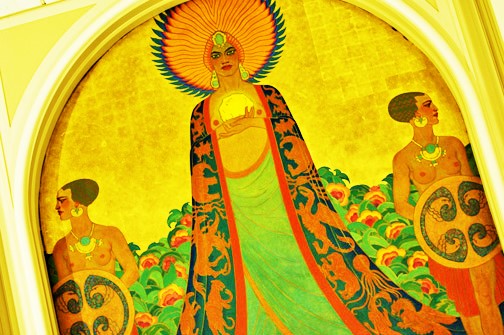
Room of the Dons, Mark Hopkins Hotel – San Francisco, CA. Photo taken by Jeff Rozwadowski
You can find The Queen Califia’s history/legend in this book >”Las Sergas de Esplanian,” or “The Adventures of Esplandian,” written by Garcia Ordonez de Montalvo. It was published in 1510 in Spain.
IN ENGLISH > CHRONICLES OF CALIFORNIA’S QUEEN CALAFIA – shop …
Queen Calafia and her island of California filled with gold.
Columbus and his men as well as people like Balboa and Peter Matyr do mention “Ethiopians” in the Caribbean, Darien region of Panama, the cost of South America, California and other areas. In fact, the Spaniard who mentions the legend of Queen Califia as being a Black Amazon Queen who ruled a land at the edge of the world, where the women were warriors and decked in gold.
Montalvo is said to have gotten a book that mentions Queen Calafia and her Black Amazon warriors. So therefor he was not the original author of Queen Califia’s history/legend. It must be older then the day it was published in 1510 Spain.
Maynard Dixon/Frank Von Sloun mural, Room of the Dons, San Francisco: Photos, Collection Galleries, Califia San, Historical Photo, Queens, Meeting Queen, Sloun Murals, Queen Califia.
Some historians have speculated that Queen Calafia was probably one of the female African Amazon Queens similar to those who ruled in Dahomey and parts of West Africa for some time, or perhaps the Nubian Queens of Nubia during the period of 100 BC to 200 AD.
According to some sources, some original Californians looked like Africans and somewhat like Melanesians.
One thing is certain, the Europeans, Americans, Spaniards never mistook American Indians for Negro Africans. They always referred to the Blacks of the Negro African type as “Moors” “Blacks” or “Ethiopians.” The Indians were sometimes mistaken for Asians or Indians from India. Hence why Columbus called the Caribbean the West Indies.
Top 5 Misconceptions About Columbus – LiveScience
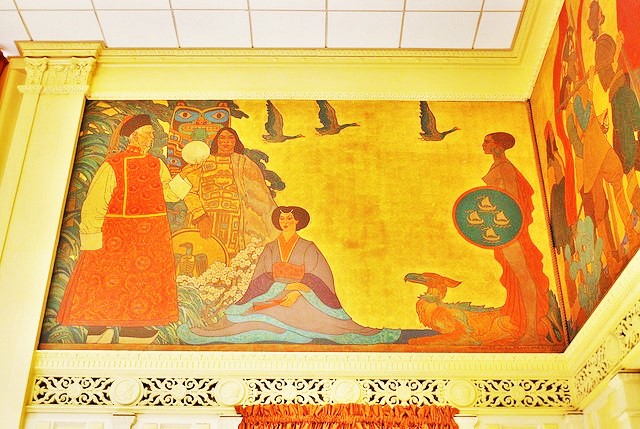
Room of the Dons, Mark Hopkins Hotel – San Francisco, CA. Photo taken by Jeff Rozwadowski
Like the California Indians of the Mongoloid Indian race who were hunted down in California at fifty dollars a head (the same genocidal practice was carried against Black Aboriginals in Australia) CTV Educational – Australia & Reconciliation – Sorry Day … and who were made to reject their Indian culture to become ‘Mexicans and accept European ways, the Black Californians suffered a similar fate.
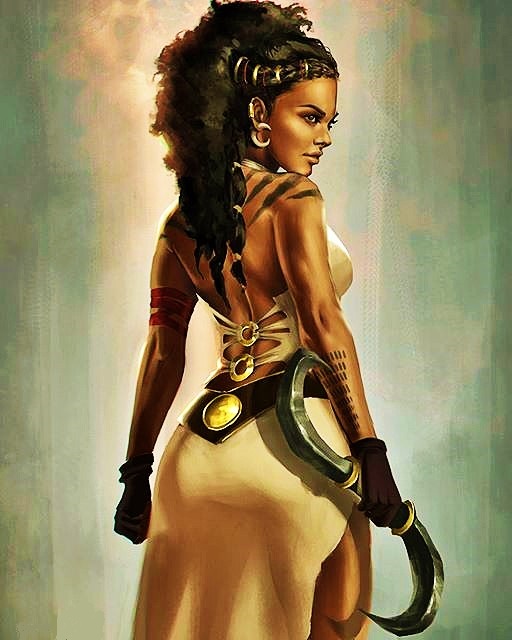
Illustrated by Salena Barnes
In his novel The Adventures of Esplandián, he writes:
They were robust of body with strong passionate hearts and great virtue.
Queen Califia’s Magical Circle is a sculpture garden located in Escondido, California. It is one of the last works of French artist Niki de Saint Phalle. The garden is named after Califia, the fictional warrior queen of the mythical Island of California, and inspired by California’s rich history and culture. It includes a circular wall and maze entryway, ten large sculptures, and native trees and shrubs planted both inside the plaza and around the outer wall.
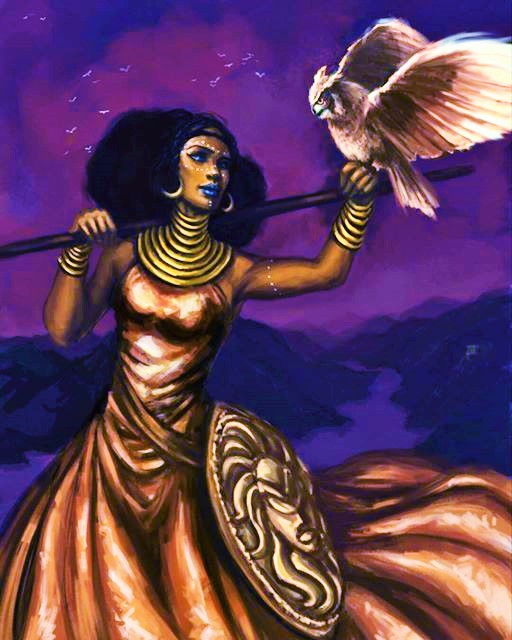
Illustrated by Christy Tortland
Ancient African Skeletons Discovered in the New World?
There have been many instances of archaeologists discovering skulls and skeletons that they believed clearly belonged to people of African descent. Polish professor Andrzej Wiercinski revealed the discovery of African skulls at Olmec sites in Tlatilco, Cerro de las Mesas and Monte Alban. Even more ancient African skeletons that would clearly predate Columbus’ arrival in the Americas were discovered throughout Central America and South America with some even being unearthed in what is now California.
There have been many instances of archaeologists discovering skulls and skeletons that they believed clearly belonged to people of African descent. Polish professor Andrzej Wiercinski revealed the discovery of African skulls at Olmec sites in Tlatilco, Cerro de las Mesas and Monte Alban. Even more ancient African skeletons that would clearly predate Columbus’ arrival in the Americas were discovered throughout Central America and South America with some even being unearthed in what is now California.
Not only Africa has indigenous black people?
Look into> A History of the African-Olmecs – Amazon.com < Although we have pictures and rock art, this is an interesting and curious subject that is still debatable today. -Sola
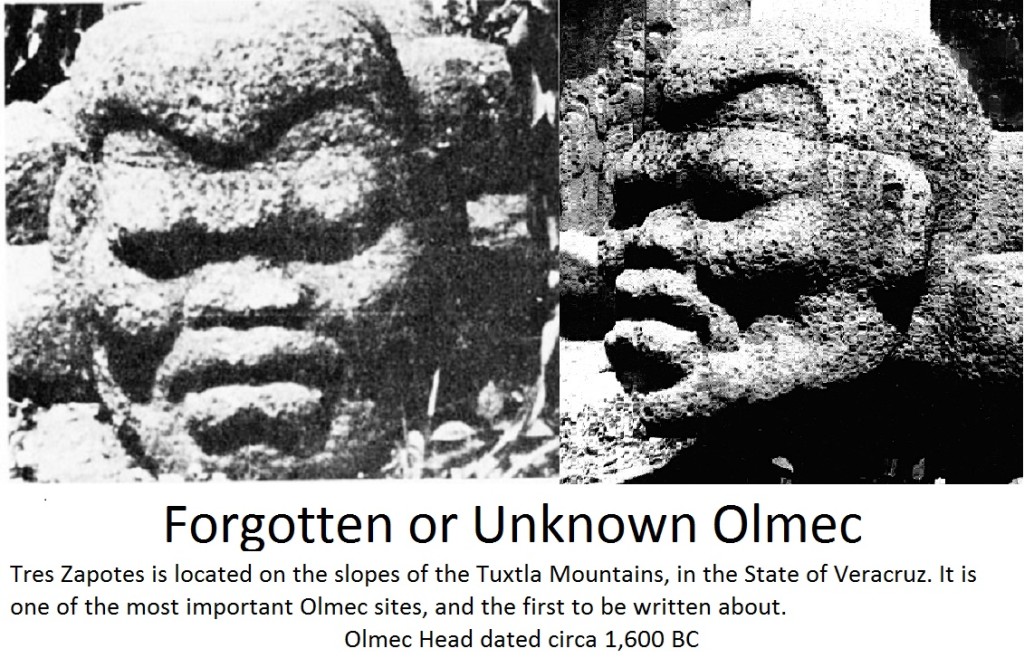
Were Aborigines the first AMERICANS? Native tribes in the Amazon found to be most closely related to indigenous Australians.
Australian Aborigines, together with indigenous populations in New Guinea and the Andaman Islands, are thought to be descended from one of the earliest groups of modern humans to migrate out of Africa around 60,000 years ago.
They are thought to have been a sea faring people who were able to hop between the islands that extend from Asia to Australia.
Instead they believe the genetic link may be as old as the first human populations to colonise the continent.
It raises the prospect that the Aborigine populations may even have been living in the area before Native Americans arrived.
The researchers have now named the mystery ancestors as Population Y after the after the Tupí word for ancestor, ‘Ypykuéra’
Researchers from Harvard University representing the second group have affirmed that there is a working model present in archaeology and genetics showing that most Native Americans today are from a single wave of expansion south of the ice sheets. But it is not correct.
Prof. David Reich said they had missed something very important. The researchers sampled 30 largely isolated native tribes living in Central and South America. The researchers were surprised to know that the tribes in the Amazon rain forest had produced a different Australasian signature. Other tribes revealed ties to Papua New Guinea and the Pacific Islands.
For now, it is not known when and how this migration took place. But the researchers have stated that the legacy of the group depicted as Population Y is quite strong. Of all, the Tupi-language speaking Surui and Karitiana tribes and the Ge-speaking Xavante of the Amazon rainforest were more closely related to Australasians.
But in the last two decades, archaeologists have found an 11,000-year-old skull in Brazil, human DNA by way of feces in a cave in Oregon, evidence of humans in coastal Chile as long as 14,800 years ago, and spearheads in Texas that could date human arrival in the Americas to 15,500 years ago. Most of the manmade artifacts found in these disparate sites lack the signatures of the Clovis people.
“The logical way people could have come to Florida by 14,600 years ago is if their ancestors entered the Americas by boat along the Pacific Coast,” Waters told Discovery News.
“They could have travelled by boat to central Mexico, crossed and come along the Gulf Coast. They could have entered the Americas via the Columbia river and then travelled inland to the Mississippi river and followed it down and entered the Gulf Coast, eventually making their way to Florida.”
The islands of “Melanesia” in the Pacific Ocean, also have indigenous black people, specially Papua New Guinea, Fiji, Tonga and Solomon Islands to name a few.
Indigenous tribes from Solomon Islands/Pan Pipers from Santa Isabel, Solomon Islands.
School students in Papua New Guinea.
Polynesia
Original people of FiJi Islands
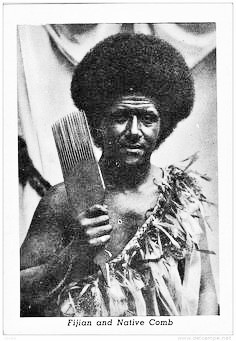
Pottery art from Fijian towns shows that Fiji was settled before or around 3500 to 1000 BC, although the question of Pacific migration still lingers. It is believed that the Lapita people or the ancestors of the Polynesians settled the islands first but not much is known of what became of them after the Melanesians arrived; they may have had some influence on the new culture, and archaeological evidence shows that they would have then moved on to Samoa, Tonga and even Hawai’i.
The first settlements in Fiji were started by voyaging traders and settlers from the west about 5000 years ago. Lapita pottery shards have been found at numerous excavations around the country. Aspects of Fijian culture are similar to the Melanesian culture of the western Pacific but have a stronger connection to the older Polynesian cultures. Trade between these three nations long before European contact is quite obvious with canoes made from native Fijian trees found in Tonga and Tongan words being part of the language of the Lau group of islands. Pots made in Fiji have been found in Samoa and even the Marquesas Islands.
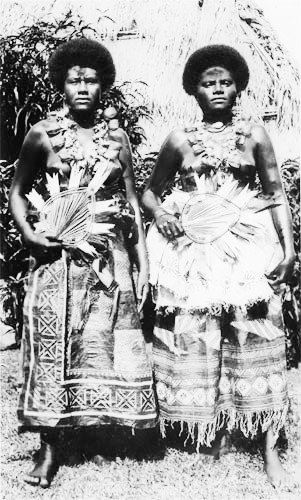
The native people of Fiji Island in 1935
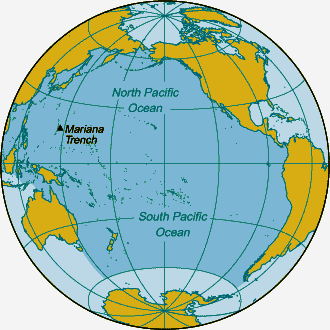
King Of Tonga
Tāufaʻāhau, King of Tonga (1845–1893).
Tonga stretches over about 800 kilometres (500 mi) in a north-south line – about a third of the distance from New Zealand to Hawaii. It is surrounded by Fiji and Wallis and Futuna (France) to the northwest, Samoa to the northeast, Niue to the east, Kermadec (part of New Zealand) to the southwest, and New Caledonia (France) and Vanuatu to the farther west.
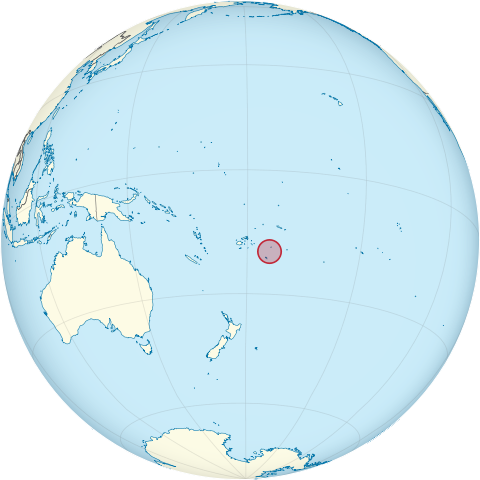
Australian Aborigines…
DNA confirms Aboriginal culture one of Earth’s oldest …
ABORIGINIES HAVE WORLD’S OLDEST ORAL HISTORY
Traditional stories passed down through generations by Australian Aborigines may be among the oldest accurate oral histories in the world.
Researchers believe these stories could constitute some of the oldest accurate oral histories in the world, passing through some 300 generations.
They are using them to map how the continent may have looked around 10,000 years ago.
Oral folklore tells how the Great Barrier Reef once formed part of the coastline of north east Queensland, while Port Phillip Bay in Victoria was once a rich place for hunting kangaroo and opossum.
Researchers have found other stories from all over the continent that mirror how the landscape dramatically changed towards the end of the last ice age.
They say at this time sea levels rose as a result of the melting of the huge ice caps that covered much of the northern hemisphere around 10,500 years ago.
Traditional stories passed down through generations by Australian Aborigines may be among the oldest accurate oral histories in the world.
Researchers believe these stories could constitute some of the oldest accurate oral histories in the world, passing through some 300 generations.
They are using them to map how the continent may have looked around 10,000 years ago.
Oral folklore tells how the Great Barrier Reef once formed part of the coastline of north east Queensland, while Port Phillip Bay in Victoria was once a rich place for hunting kangaroo and opossum.
Researchers have found other stories from all over the continent that mirror how the landscape dramatically changed towards the end of the last ice age.
They say at this time sea levels rose as a result of the melting of the huge ice caps that covered much of the northern hemisphere around 10,500 years ago.

japanfocus.org
Orang Asli People
The modus operandi was basically to swoop down a settlement and then kill off all the adult men. Women and children were captured alive as they are ‘easier to tame.’ The captives Orang Asli slaves were sold off or given to local rulers and chieftains to gain their favor.
Slaves trade soon developed and even continued into the present century despite the official abolition of all forms of slavery in 1884. The derogatory term “Sakai” is used to refer to the Orang Asli until the middle of the 20th century meant slave or dependent. Many of the elders Orang Asli still remember this sad period of their history, and they detest being called “Sakai”
Semang People
The Semang are a Negrito ethnic group of the Malay Peninsula. Lowland Semang tribes are also known as Sakai, although this term is considered to be derogatory by the Semang people.
They are probably the indigenous peoples of this area. They have been recorded to have lived here since before the 200s Common Era (CE). They are ethnologically described as nomadic hunter-gatherers.
| Regions with significant populations | |
|---|---|
| 4296 | |
| 300 | |
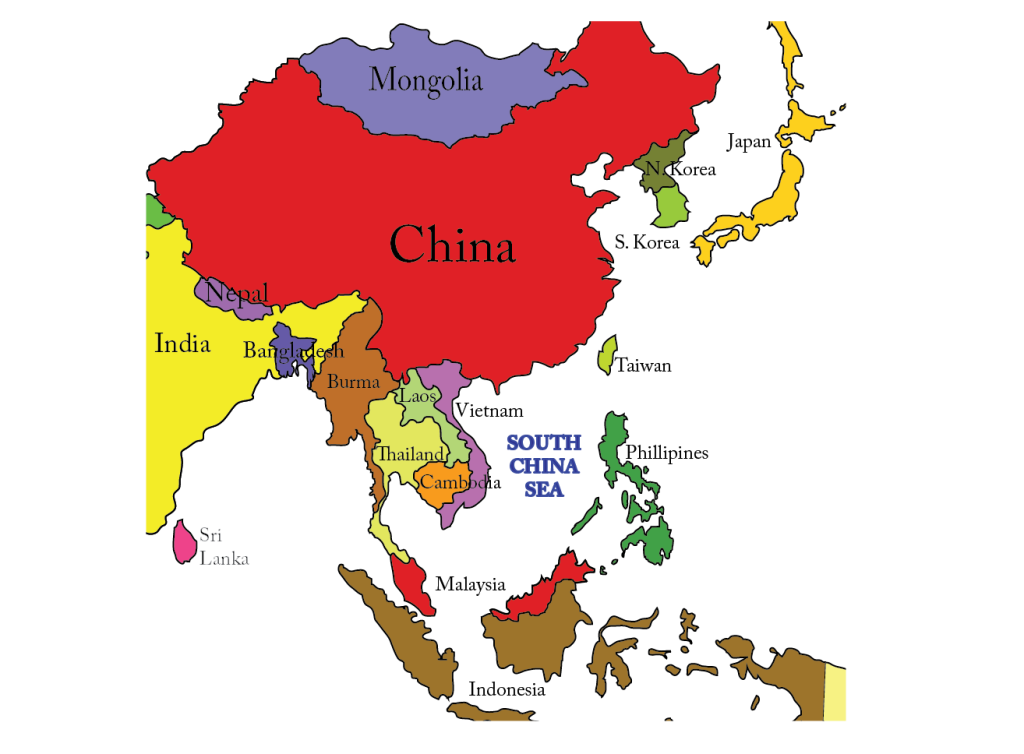
The Maniq People
The Maniq (มันนิ) are an ethnic group of Thailand. They are the only Negrito group in Thailand and speak Maniq (also called Tonga, Kensiu or Mos), a Mon–Khmerlanguage in the Aslian language group. It is thought they once spoke a language similar to the Andamanese language but then adopted the language of the Mon–Khmer people around them.
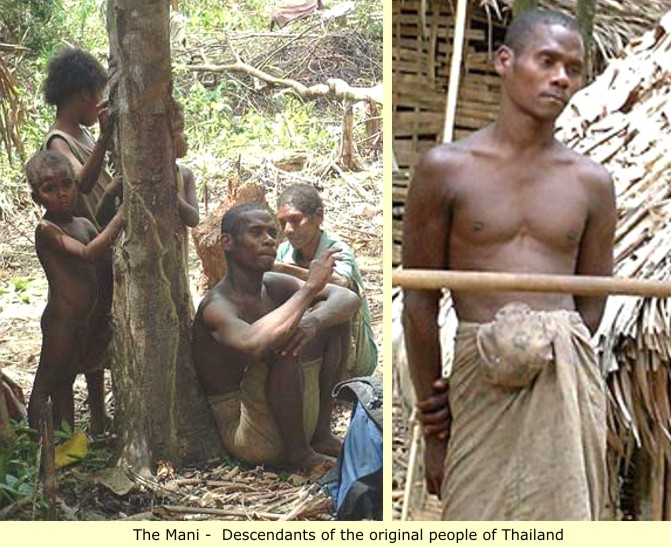
They hunt many types of animals and consume many different kinds of vegetables and fruits. They wear simple clothes made of materials such as bamboo leaves. They are familiar with many different species of medicinal herbs.
The total population of the “Maniq” is about 300 people.
“Black” people of Asia (the Aeta, Mani, Orang Asli, and others)…
The Aeta of the Philippines…
The Aeta or Agta, are an indigenous people who live in scattered, isolated mountainous parts of the island of Luzon, the Philippines.

These peoples are considered to be Negritos, whose skin ranges from dark to very dark brown, and possessing features such as a small stature and frame; hair of a curly to kinky texture and a higher frequency of naturally lighter colour (blondism) relative to the general population; small nose; and dark brown eyes. They are thought to be among the earliest inhabitants of the Philippines, preceding the Austronesian migrations.
The Aeta were included in the group of people termed “Negrito” during Spanish Era. Various Aeta groups in northern Luzon are known as Pugut or Pugot, an Ilocanoterm that also means “goblin” or “forest spirit”, and is the colloquial term for people with darker complexions. These names are mostly considered inappropriate or derogatory by fellow Negritos of northern Luzon.
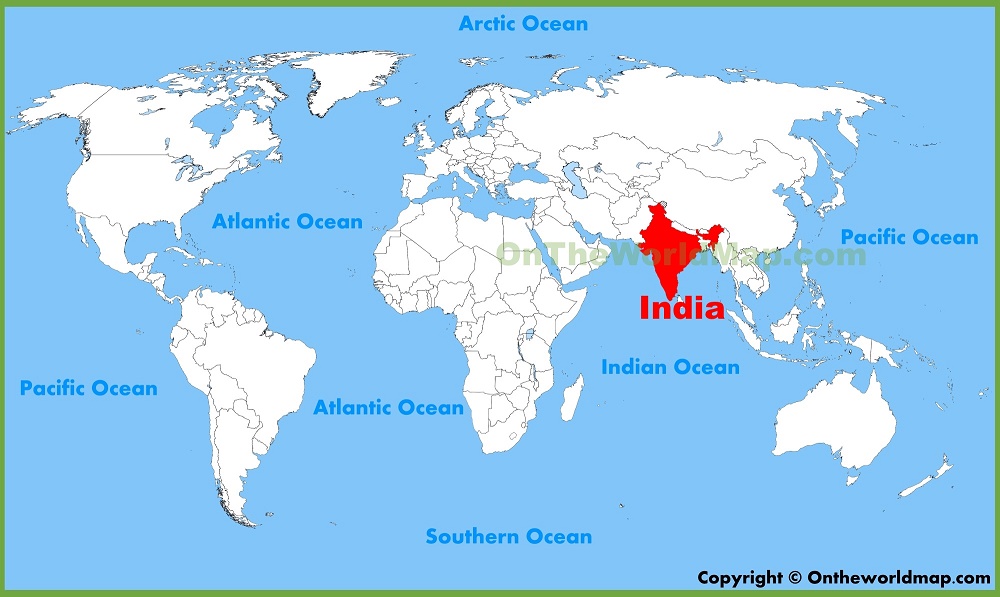
This African tribe has been in India for at least a thousand years (1,000)
Look how the camera man/news portray us. Little does he (camera man/editor) understands that these ancient africans are happy to get a little attention and are acting silly for the camera. Unfortunately I don’t think this tribe has any idea how this will be portrayed to the rest of the world.-Sola
Jarawa tribe Andaman Islands India.
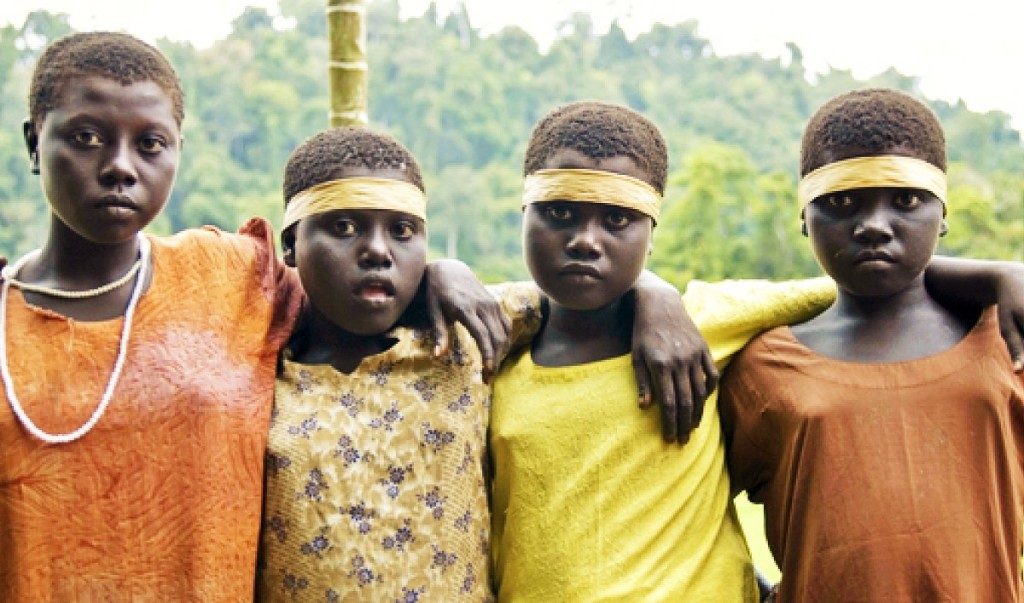
The Andaman islands have been inhabited for several thousand years, at the very least. The earliest archaeological evidence yet documented goes back some 2,200 years; however, the indications from genetic, cultural and isolation studies suggests that the islands may have been inhabited as early as the Middle Paleolithic. The indigenous Andamanese people appear to have lived on the islands in substantial isolation from that time until the 18th century CE.
The Andamans are theorized to be a key stepping stone in a great coastal migrationof humans from Africa via the Arabian peninsula, along the coastal regions of the Indian mainland and towards Southeast Asia, Japan and Oceania.
Interesting Channel
Quote: I explore intriguing places and enjoy natural beauty. I have posted videos from Aruba, Bahamas, India, Singapore, Peru, Mexico and U.S.
This is the Konark Sun Temple in India, and I am going to show you a sculpture that flies in the face of mainstream history. Historians claim that Africa had no connection with India until Vasco Da Gama reached India in 1498.
But look at this carving, it clearly shows a Giraffe on the left side and all its legs, body and long neck are shown with remarkable accuracy. Notice how even its face, the ears and even its long tail are carved perfectly depicting a real giraffe. This is incredible, because Giraffes are found only in Africa, and this temple was built no later than 1250 A.D. And Giraffes are not found in Egypt, where we know advanced civilization existed, but are found far down south in the African continent. According to historians Vasco Da Gama was the first person to ever visit India from Africa. They claim that he had briefly explored Africa, before reaching India in 1498. How is an African Giraffe accurately carved at least two hundred and fifty years before Vasco Da Gama’s arrival to India?
Let us to take a good look at the entire carving. It clearly shows an Indian King sitting on an Elephant on the left side. You can even see another person sitting in front of him who controls the elephant. On the right side, you can side several people wearing long skirts standing on the ground. The clothing and the faces are carved distinctly different from other Indian sculptures, to show that they are African people. It also looks like they are lifting a few other people who are giving something to the Indian King. On the far right you can see the Giraffe, and a young boy sitting on it, while there is bystander watching this entire scene. All this happens under a tree that has very large flowers, almost the size of an elephant’s head.
Did this meeting happen while an Indian King was traveling to Africa? It’s less likely because the sculptor who carved this, would have not have seen it. It’s much more likely that African travelers visited India way before Vasco Da Gama, which is not mentioned in anywhere in History. And whether this journey took place through land or water, it is truly a remarkable feat to bring a Giraffe alive through such a long trip.
So, now we know that India was connected to Africa, centuries before what the history claims. It also proves that ancient Africans had a very advanced civilization that was capable of making journeys to other continents. Is it possible that ancient Africans and Indians had established trade routes between continents? Thanks to the Indian sculptor for carving such an accurate scene, because without this we would just be depending on mainstream historians.
So, now we know that India was connected to Africa, centuries before what the history claims. It also proves that ancient Africans had a very advanced civilization that was capable of making journeys to other continents. Is it possible that ancient Africans and Indians had established trade routes between continents? Thanks to the Indian sculptor for carving such an accurate scene, because without this we would just be depending on mainstream historians.
–Phenomenal Travel
Source:
There are so many more sources and forums on this subject. I did the best I can to summarize this list. If you are still curious please by all means do your research and satisfy your curiosity. -Sola
The information contained on this site is intended for educational purposes only.
“Copyright Disclaimer Under Section 107 of the Copyright Act 1976, allowance is made for “fair use” for purposes such as criticism, comment, news reporting, teaching, scholarship, and research. Fair use is a use permitted by copyright statute that might otherwise be infringing. Non-profit, educational or personal use tips the balance in favor of fair use.
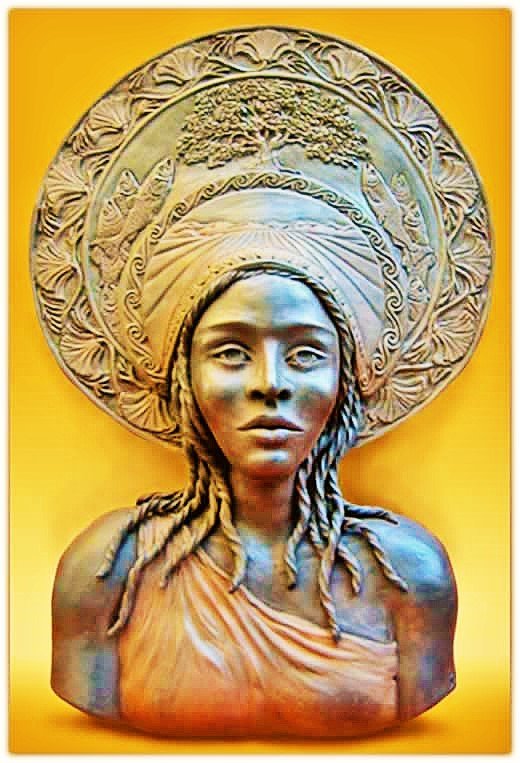
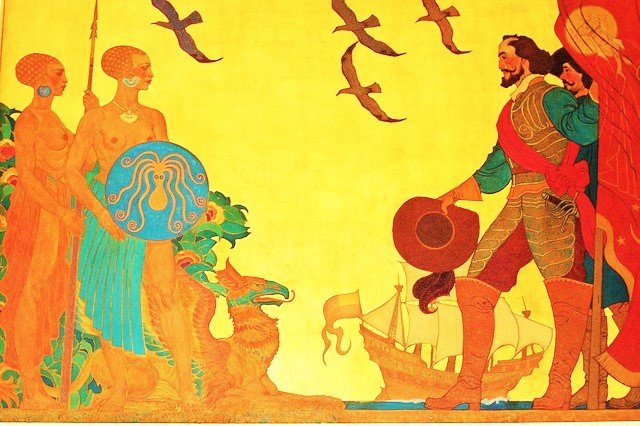
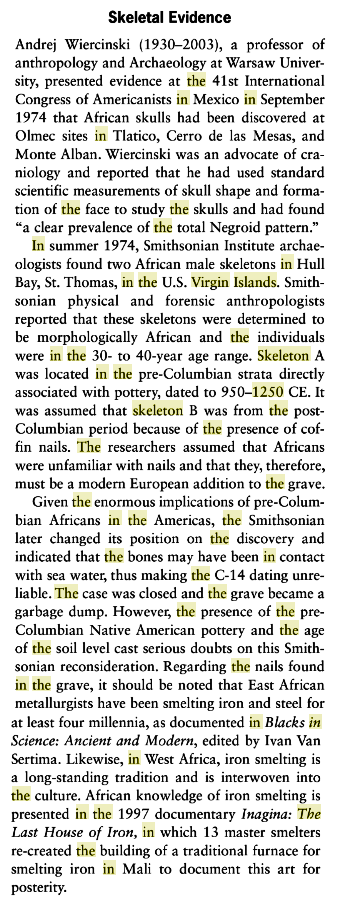
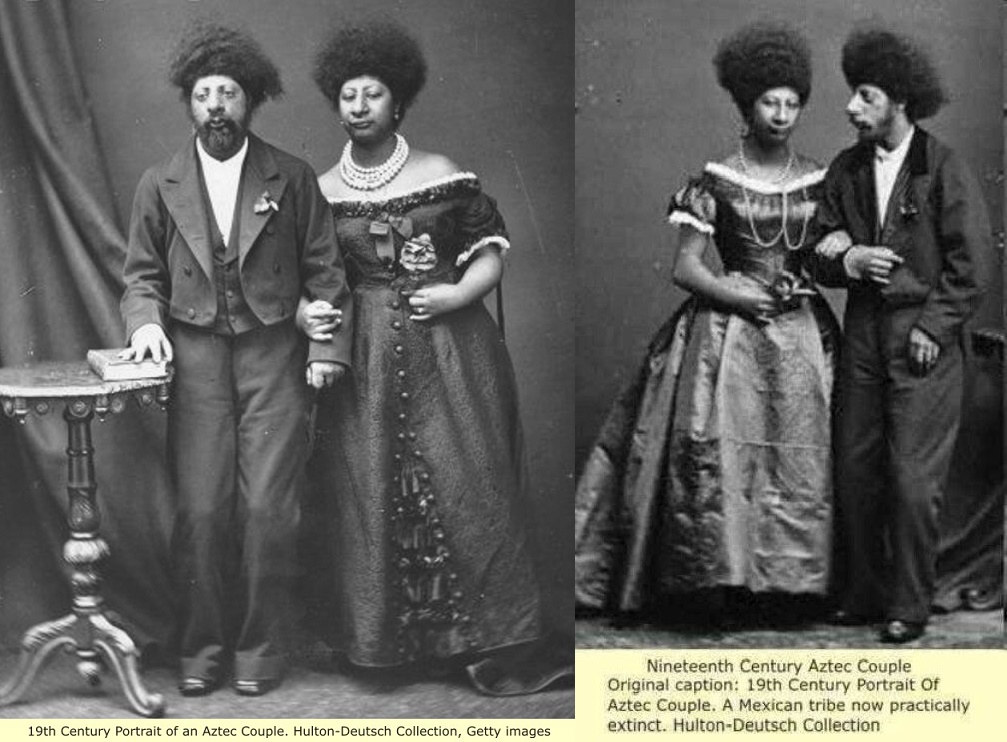
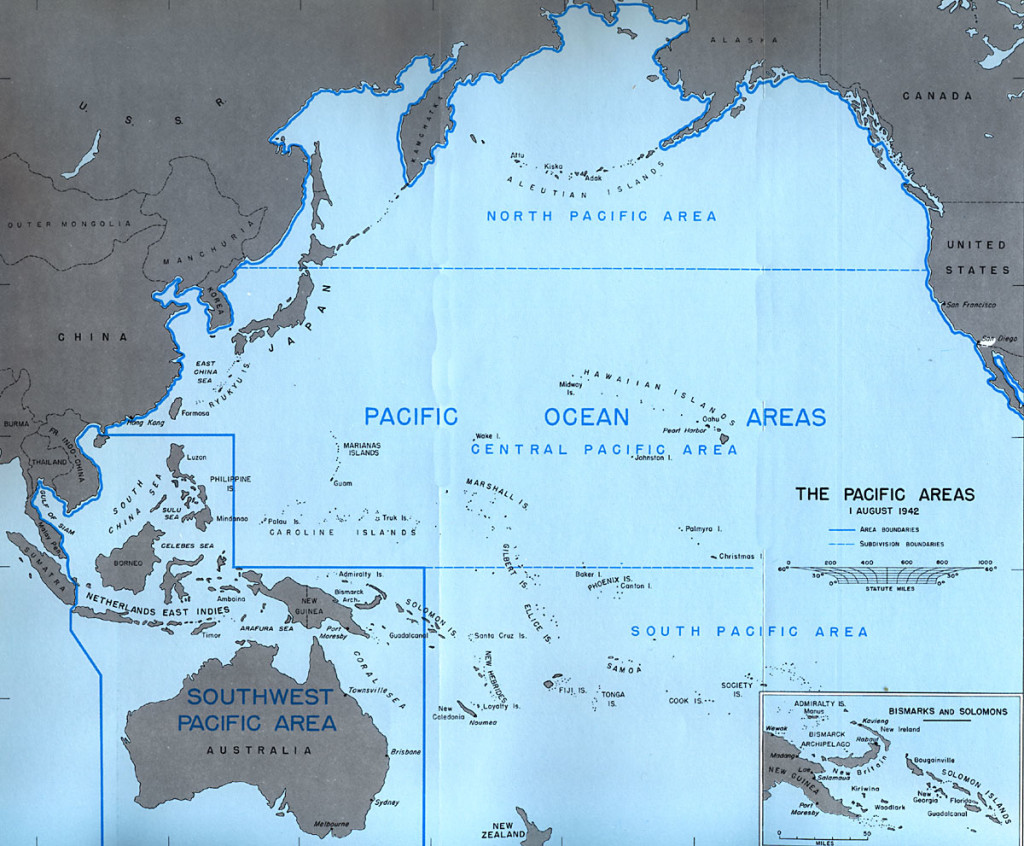
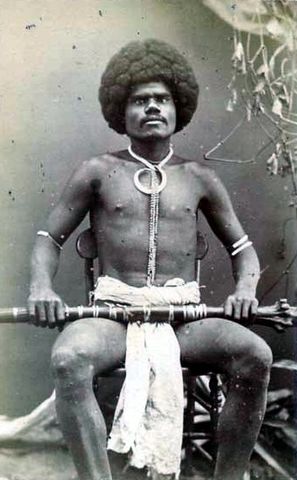
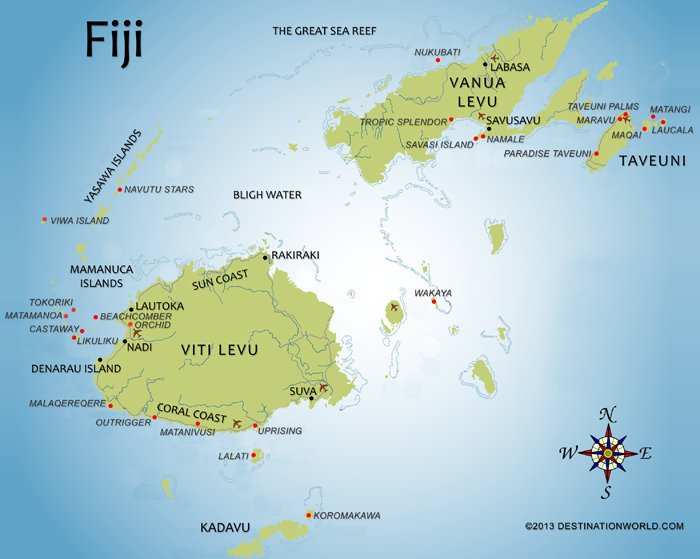
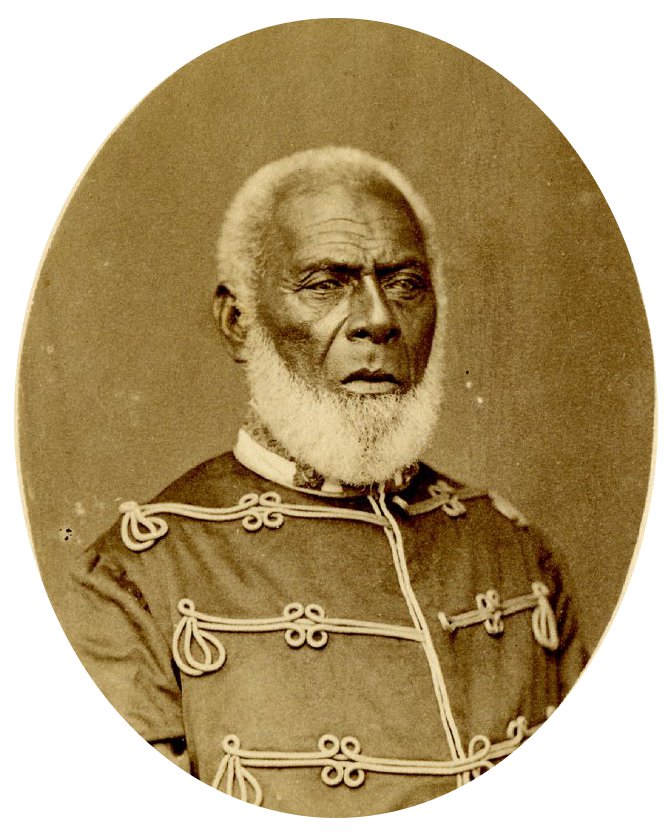
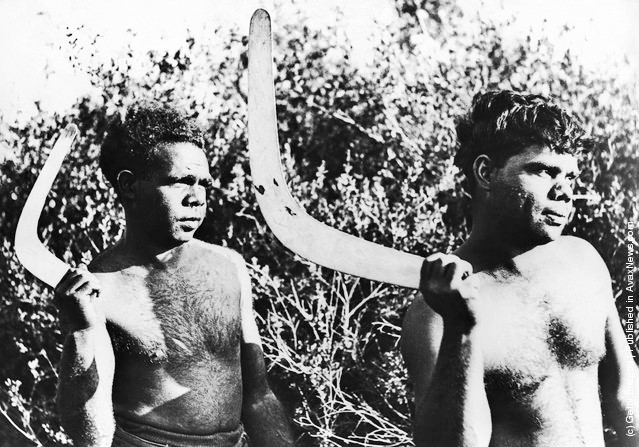
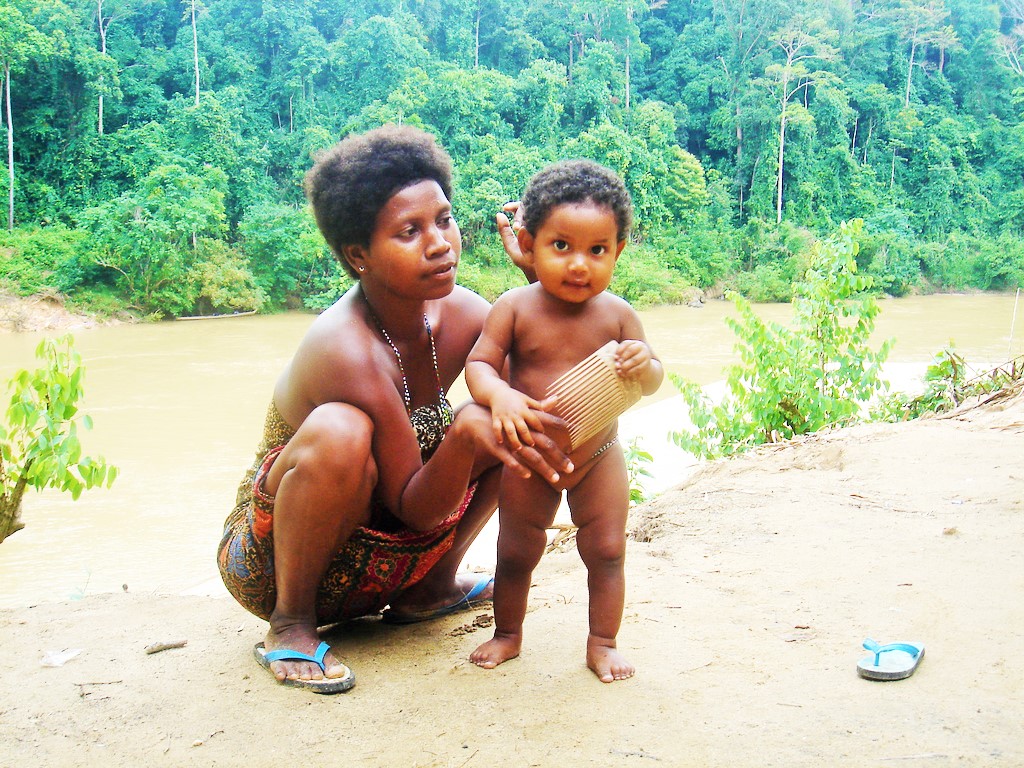
Comments
Post a Comment